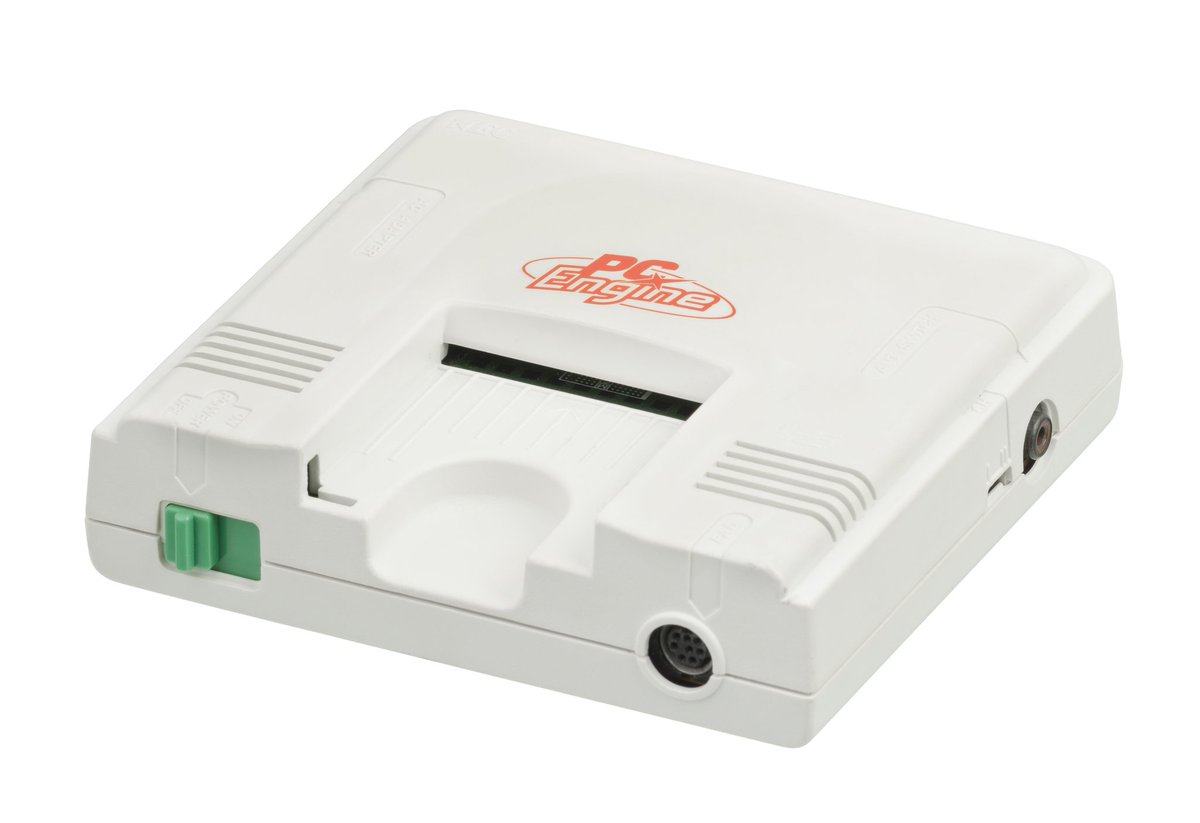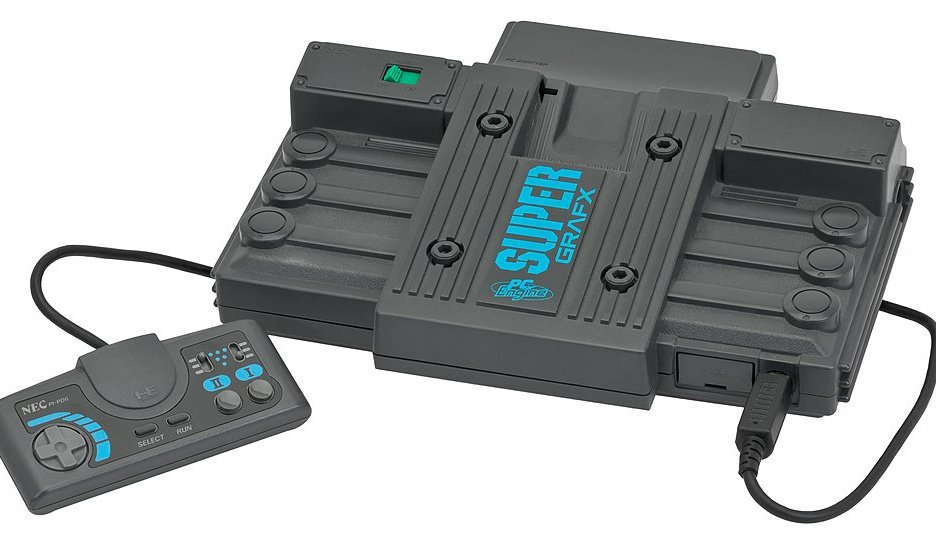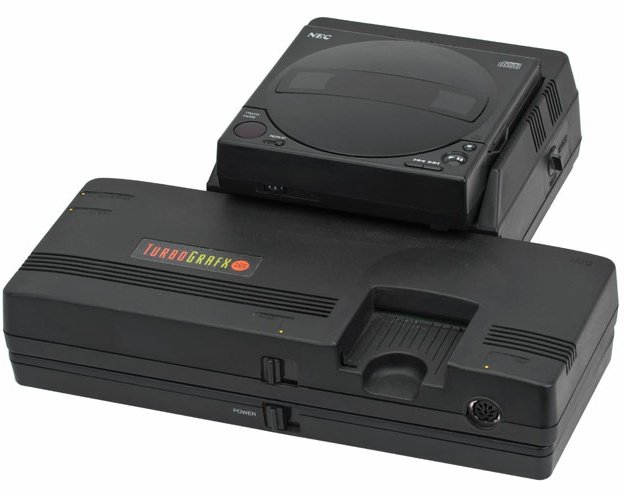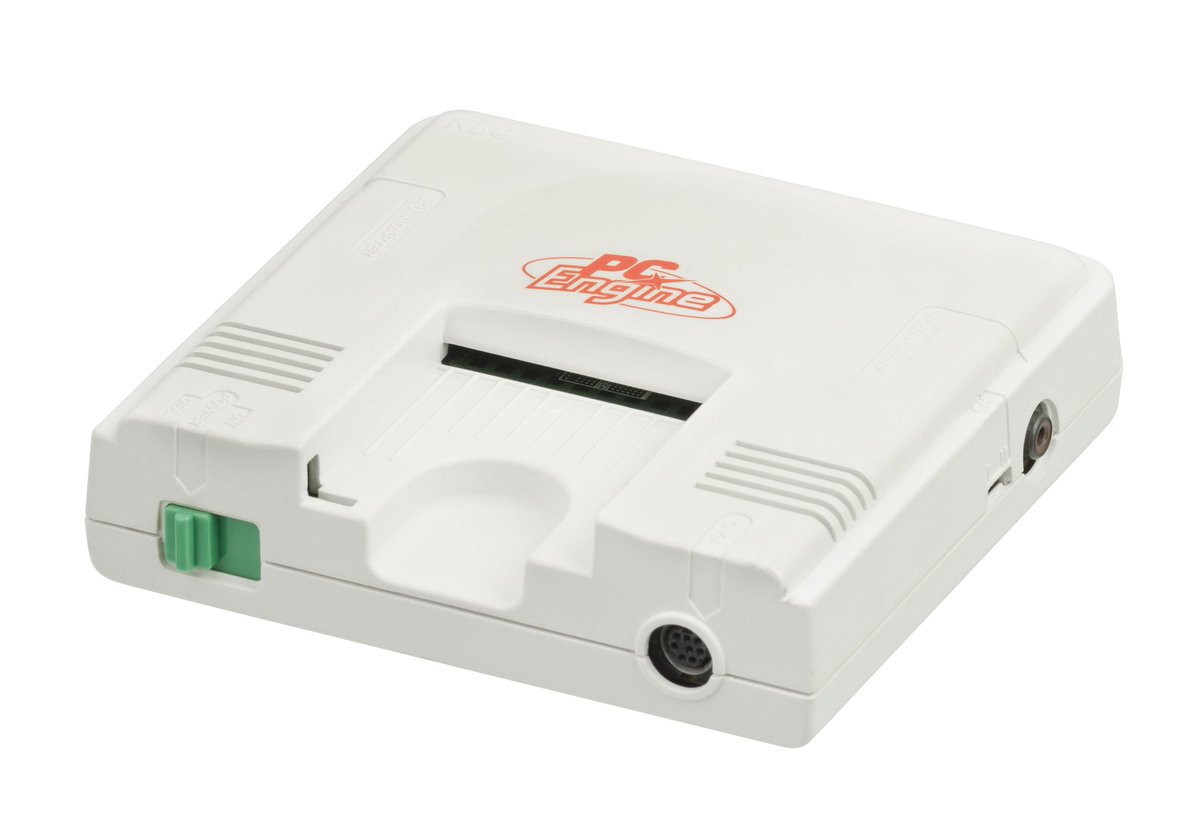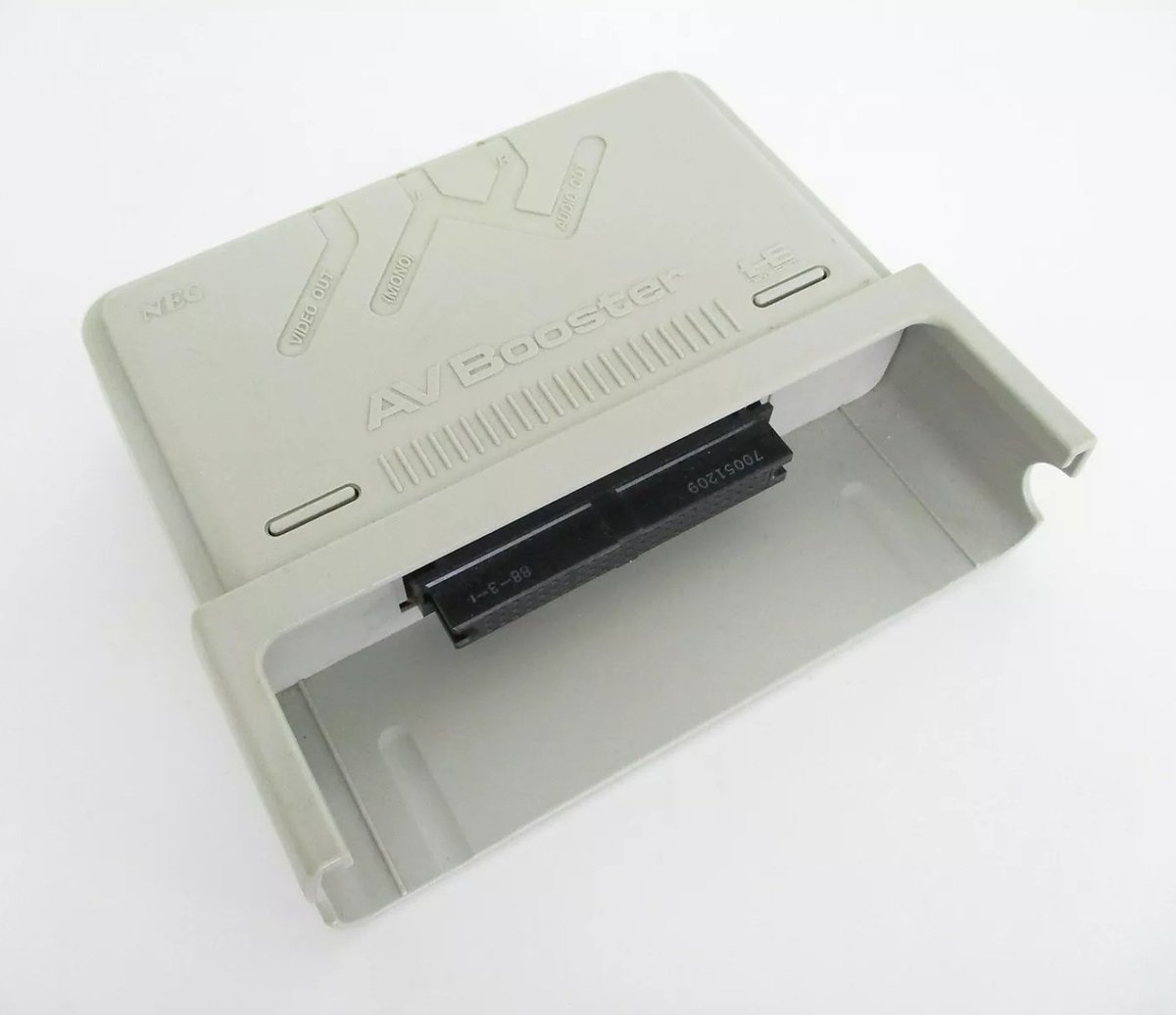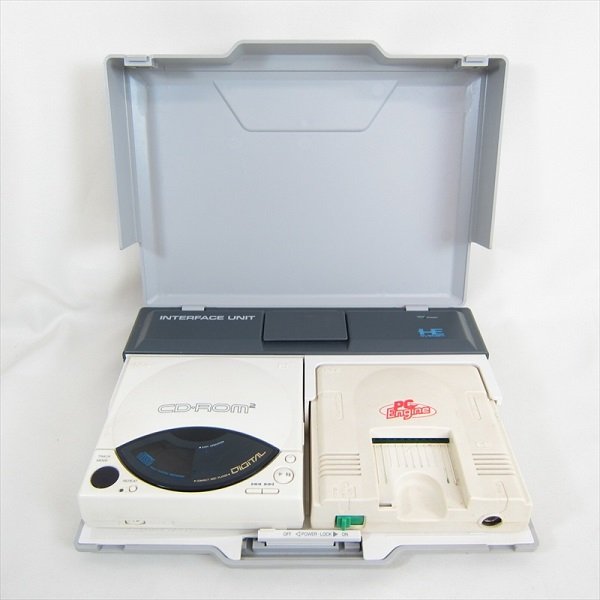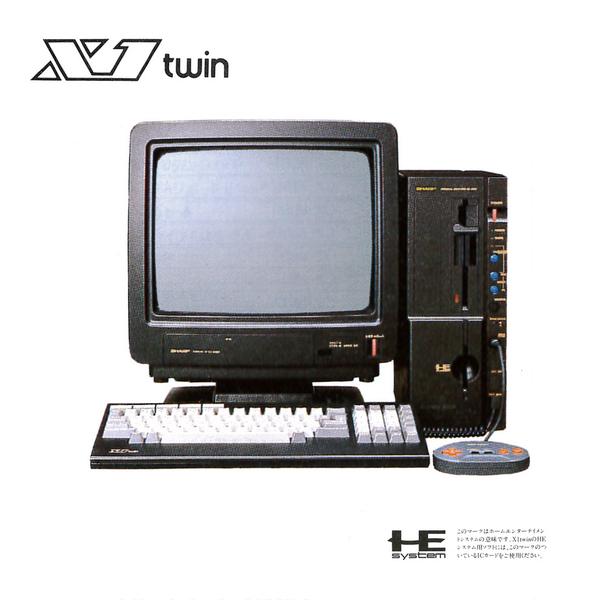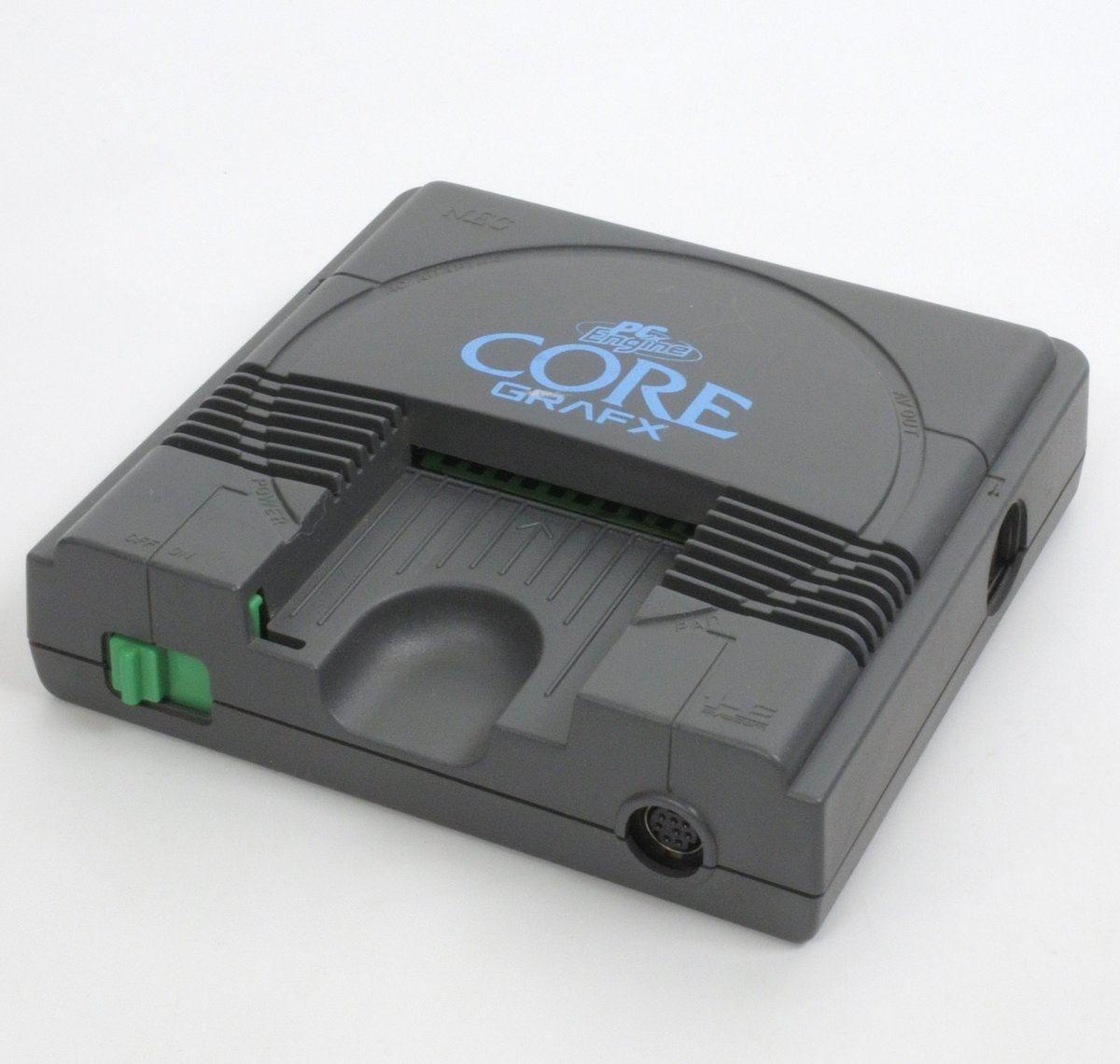A thread.
The PC Engine. Possibly one of the most daunting consoles to start collecting for, with a multitude of regional variants, CD drives, system cards and accessories released across nearly 7 years. This aims to help by explaining each and every one.
#RETROGAMING
#PCEngine
The PC Engine. Possibly one of the most daunting consoles to start collecting for, with a multitude of regional variants, CD drives, system cards and accessories released across nearly 7 years. This aims to help by explaining each and every one.
#RETROGAMING
#PCEngine
30th October 1987. 
In collaboration with Hudson Soft, electronics manufacturer NEC releases the PC Engine in Japan. A small yet highly capable 8-bit system, loading games from thin HuCards. The system is RF out only, and with 1 controller port. A multi tap is also released.

In collaboration with Hudson Soft, electronics manufacturer NEC releases the PC Engine in Japan. A small yet highly capable 8-bit system, loading games from thin HuCards. The system is RF out only, and with 1 controller port. A multi tap is also released.
1988 
To improve the PC Engine's limited video ability, NEC releases the AV booster. This add on attaches to the back and provides composite out capability.
NEC also releases the PC-KD863G monitor which has a PC Engine built in.

To improve the PC Engine's limited video ability, NEC releases the AV booster. This add on attaches to the back and provides composite out capability.
NEC also releases the PC-KD863G monitor which has a PC Engine built in.
4th December 1988 
The PC Engine becomes the worlds first console with CD capability when NEC releases the CD-ROM². This connects to the PC Engine via an interface unit, which is either bundled or sold separately. A special HuCard, the System Card, allows the CD to operate.

The PC Engine becomes the worlds first console with CD capability when NEC releases the CD-ROM². This connects to the PC Engine via an interface unit, which is either bundled or sold separately. A special HuCard, the System Card, allows the CD to operate.
1989 
On 30th April Sharp release the first 3rd party PC engine in the shape of the X1 Twin. A computer with added PC Engine capability.
On 8th August NEC release the Ten no Koe 2 module for saving additional game data.

On 30th April Sharp release the first 3rd party PC engine in the shape of the X1 Twin. A computer with added PC Engine capability.
On 8th August NEC release the Ten no Koe 2 module for saving additional game data.
29th August 1989 
The PC Engine is officially released in U.S. test markets. Now called the TurboGrafx-16, the system now sports a larger black casing with games coming on "Turbo chips". The Sega Genesis was released 2 weeks later and quickly eclipsed the system.

The PC Engine is officially released in U.S. test markets. Now called the TurboGrafx-16, the system now sports a larger black casing with games coming on "Turbo chips". The Sega Genesis was released 2 weeks later and quickly eclipsed the system.
1989 
Despite this, just a few months later in November, the CD-ROM² is released in the U.S. as the TurboGrafx-CD. This fits to the back of the system and provides composite video out.
Also released is the Turbo booster as a cheaper option for those who want composite video.

Despite this, just a few months later in November, the CD-ROM² is released in the U.S. as the TurboGrafx-CD. This fits to the back of the system and provides composite video out.
Also released is the Turbo booster as a cheaper option for those who want composite video.
1989 
On 22nd November NEC release a cheaper HuCard only PC Engine called the "Shuttle". Aimed at a younger audience, its design resembles a space ship.
Later on 8th December the CoreGrafx is released. This revised PC Engine now includes AV out and a revised case + processor.

On 22nd November NEC release a cheaper HuCard only PC Engine called the "Shuttle". Aimed at a younger audience, its design resembles a space ship.
Later on 8th December the CoreGrafx is released. This revised PC Engine now includes AV out and a revised case + processor.
8th December 1989 
NEC release the PC Engine's successor, the backwards compatible SuperGrafx. Sold as a 16-bit console, it featured improved graphics and audio. Only 6 games were developed that made use of this extra power.
An adapter allowed it to connect to the CD-ROM².

NEC release the PC Engine's successor, the backwards compatible SuperGrafx. Sold as a 16-bit console, it featured improved graphics and audio. Only 6 games were developed that made use of this extra power.
An adapter allowed it to connect to the CD-ROM².
December 1990 

A truly handheld, HuCard only version of the system is released as the GT in Japan and the Turbo Express in the U.S. A tv tuner was also available. Much like the Game Gear and Lynx, its price and battery life meant it was soon dominated by the Nintendo Game Boy


A truly handheld, HuCard only version of the system is released as the GT in Japan and the Turbo Express in the U.S. A tv tuner was also available. Much like the Game Gear and Lynx, its price and battery life meant it was soon dominated by the Nintendo Game Boy
21st June 1991 
The final revision of the base PC Engine is released as the CoreGrafx 2. It has a minor cosmetic redesign and reverts back to the original systems processor.
Later that year a Ten no Koe bank is released, a specialised HuCard for saving CD-ROM² games.

The final revision of the base PC Engine is released as the CoreGrafx 2. It has a minor cosmetic redesign and reverts back to the original systems processor.
Later that year a Ten no Koe bank is released, a specialised HuCard for saving CD-ROM² games.
21st September 1991 
A combined console and CD-ROM² unit is released, the PC Engine Duo. The CD drive is upgraded to now play Super CD-ROM² games.
In October a new Super System card is released to allow the orignal CD-ROM² unit to play the newer Super CD-ROM² games.

A combined console and CD-ROM² unit is released, the PC Engine Duo. The CD drive is upgraded to now play Super CD-ROM² games.
In October a new Super System card is released to allow the orignal CD-ROM² unit to play the newer Super CD-ROM² games.
13th December 1991 
Finally towards the end of 1991 a stand alone Super CD-ROM² add-on is released. Compatible with the main previous console iterations, it has the Super System Card built in.

Finally towards the end of 1991 a stand alone Super CD-ROM² add-on is released. Compatible with the main previous console iterations, it has the Super System Card built in.
13th December 1990 
The PC Engine GT is released. This expensive unit added an LCD screen, controls and tv tuner. Despite looking like a portable laptop, it always requires an external power supply. It can connect to the standard and Super CD-ROM² , the latter with an adapter.

The PC Engine GT is released. This expensive unit added an LCD screen, controls and tv tuner. Despite looking like a portable laptop, it always requires an external power supply. It can connect to the standard and Super CD-ROM² , the latter with an adapter.
10th October 1992 
The PC Engine Duo is released in the U.S as the Turbo Duo, allowing for Super CD-ROM². This time the system is cosmetically similar to it's Japanese counterpart. A Super System card is also released to upgrade the older TurboGrafx-CD.

The PC Engine Duo is released in the U.S as the Turbo Duo, allowing for Super CD-ROM². This time the system is cosmetically similar to it's Japanese counterpart. A Super System card is also released to upgrade the older TurboGrafx-CD.
25th March 1993 
The PC Engine Duo R is released, bringing only cosmetic changes to the system.
1993

The Pioneer Lazeractive laser disk player is launched and allows for the addition of a PCE/TG module. It can play all CD-ROM² games plus 11 unique LD-ROM games.

The PC Engine Duo R is released, bringing only cosmetic changes to the system.
1993


The Pioneer Lazeractive laser disk player is launched and allows for the addition of a PCE/TG module. It can play all CD-ROM² games plus 11 unique LD-ROM games.
12th March 1994 
A final system card is released for further improved games. The Arcade card. The Duo card is for Super CD-ROM² systems such as the Duo and the Pro card is for standard CD-ROM² sytems replacing the Super System Card.

A final system card is released for further improved games. The Arcade card. The Duo card is for Super CD-ROM² systems such as the Duo and the Pro card is for standard CD-ROM² sytems replacing the Super System Card.
25th June 1994 
The final PC Engine variant is released as the Duo RX. Again this brings only cosmetic changes and the inclusion of a six button controller.
7 years of hardware revision is brought to a close.

The final PC Engine variant is released as the Duo RX. Again this brings only cosmetic changes and the inclusion of a six button controller.
7 years of hardware revision is brought to a close.
23rd December 1994 
The final system to be released by NEC was the PC-FX. A 32-bit machine designed to take over from the PC Engine. However it lacked a 3D processor meaning it could not compete with the Playstation released in the same month. Only 62 games were released.

The final system to be released by NEC was the PC-FX. A 32-bit machine designed to take over from the PC Engine. However it lacked a 3D processor meaning it could not compete with the Playstation released in the same month. Only 62 games were released.
This brings to a close the thread on the PC Engine and its many iterations. I hope it has been interesting as it has insightful.
The next time someone asks you if you need a Super Systems card to play games on a Lazeractive PC Engine Pac, you'll be ready to answer!
The next time someone asks you if you need a Super Systems card to play games on a Lazeractive PC Engine Pac, you'll be ready to answer!
Information is correct as far as I can ascertain and gathered from the following sources:
https://en.m.wikipedia.org/wiki/TurboGrafx-16
http://www.racketboy.com/retro/tubrografix-16-tg16-101-beginners-guide
http://www.pc-engine.co.uk/?section=main
https://necretro.org/Main_Page
https://en.m.wikipedia.org/wiki/TurboGrafx-16
http://www.racketboy.com/retro/tubrografix-16-tg16-101-beginners-guide
http://www.pc-engine.co.uk/?section=main
https://necretro.org/Main_Page

 Read on Twitter
Read on Twitter